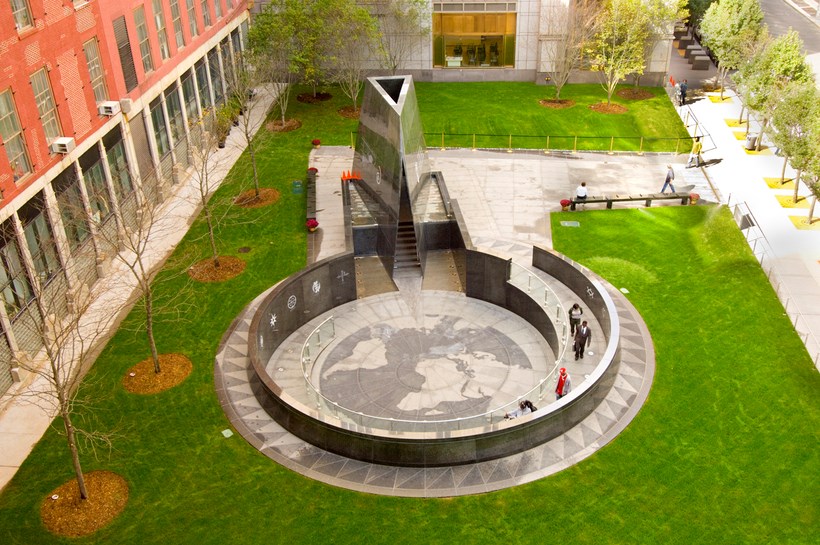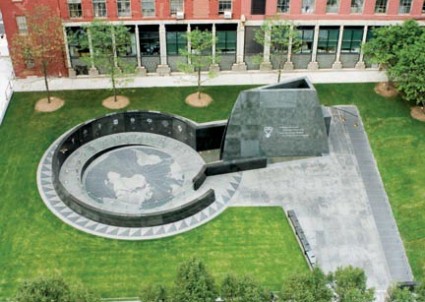AFRICAN BURIAL GROUND
AFRICAN AMERICAN
290 Broadway, Manhattan
2004-07, Memorial: Rodney Leon and Nicole Hollant-Denis
AARIS Architects
During the 18th century, when New York City was second only to Charleston, South Carolina, for its population of enslaved Africans, a roughly six-acre site north of present- day City Hall Park, then just outside the city’s northern border, was an African burial ground for an estimated 15,000 people, both free and enslaved. In 1794, the city closed the burial ground and leveled the hilly terrain with landfill to make way for development, thus preserving the burials below. Over time, the area was developed and the burial ground forgotten, much like the history and contributions of the African community itself. In October 1991, the General Services Administration (GSA), a federal agency, announced the rediscovery of intact burials and the remains of more than 400 people on the site of a planned federal office building at 290 Broadway. The GSA was criticized for its handling of the archaeological study and control was handed over to a team at the historically black Howard University. Because of strong activism by the African-American community, Congress passed and President George H. W. Bush signed a law to prohibit construction on the site where remains were found and to fund a memorial. The memorial opened in 2007 and a visitor center within 290 Broadway, run by the National Park Service, opened in 2010. The African Burial Ground is considered the largest colonial- era cemetery for enslaved African people, and in addition to being of great historical and spiritual significance, is a major resource for the study of the African diaspora. The African Burial Ground is part of the African Burial Ground & The Commons Historic District; a National Historic Landmark and listed on the State and National Register of Historic Places.
Photo courtesy of the National Parks Service.

